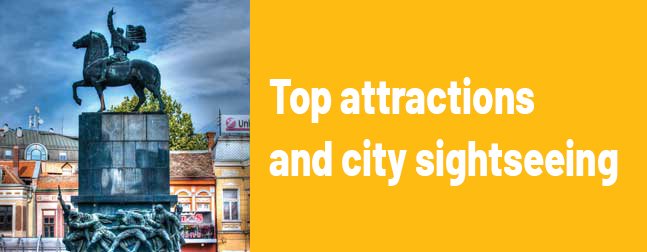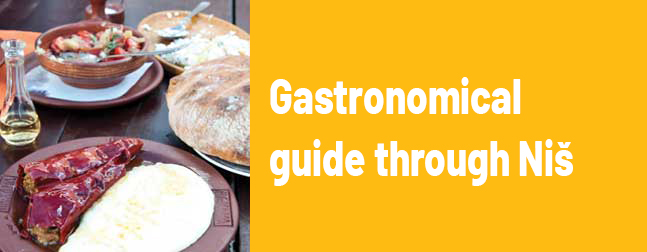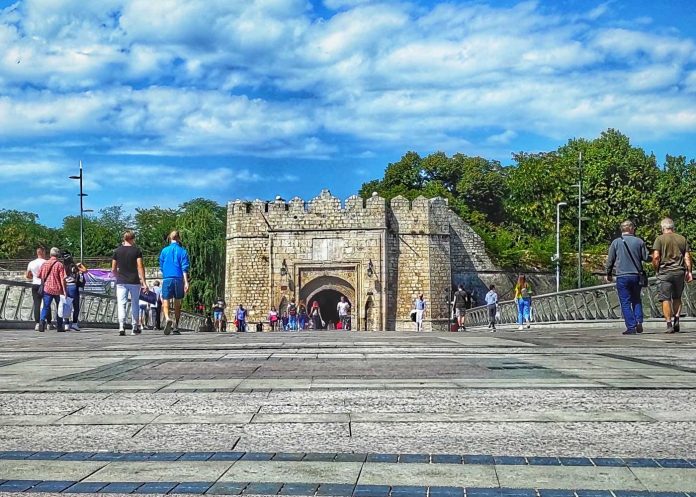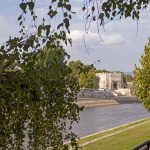Basic info
Old, strong, high ramparts and grates of Niš Fortress, which has stood on the right bank of the Nišava since the first half of the 18th century, are counted as one of the most beautiful and best preserved fortresses in the Central Balkans. The history of the fortification in this location began in the 1st century AD when Roman legions paved the way for a new civilization.
Built both by Romans and Serbs, the fortress was razed and rebuilt several times until the Ottomans gave its final appearance in 1730. Niš is one of the rare cities in the world with an impressive fortress in the very center that hasn’t been moved for two millennia.
Location
Đuke Dinić bb
Area
22,1 hectares
Height
8 meters
Width of the rampart:
3 meters
Entrance
Free entry. The Fortress is open throughout the year 24 /7..
Major attractions inside the fortress:
- STAMBOL GATE (1723.) represents a symbol of the Fortress and the city of Nis. It was built in the period between 1719. and 1723. The marble slab, which is located above the massive wooden gate, was set in 1723. and represents the completion of the main works on the fortress. Besides the rich oriental ornaments on the topside of the gate, there are gear-shaped loopholes and circular holes for cannons which were used for defence of the fortress and the city. There were guard-houses and prison cells in the vaulted passage.
- HAMAM (Turkish Bath, 1498.) is located at the very entrance of the Fortress, at the left side. According to Ottoman census books, the hammam has existed since 1498 and it represents the best preserved building in the Fortress from the period of the Ottoman rule. It was built as a single bath that was used either by women (usually by day) or by men (by night). Clay pipes used to bring water from the river to the hammam, where it was filtered and heated before it was used.
- THE ARSENAL (1857.) Located on the right of the entrance of the Fortress, the Arsenal used to be a storehouse where cannons, gunpowder, cannonballs and other weapon and ammunitions were kept. It was specially designed and built with the purpose of storing sensitive materials. It was built by Ismail Pasha in 1857. The Arsenal serves today as an exhibition area of the Gallery of Contemporary Fine Arts.
- ROMAN THERMAE (4th century). Located at the very entrance of former Naissus, thermae used to play a role in a procedure demanding everyone to bathe before entering the city. This building dates from the 4th century and almost all rooms that comprised the complex of the ancient bath are still preserved today: two central changing rooms, a cold (frigidarium) and a warm (tepidarium) bath.
- PRINCE MILAN OBRENOVIC AND NIS LIBERATORS MONUMENT (1902.) was erected in gratitude to prince and his army for liberating Niš from the five century long rule of the Ottoman Empire. The monument was symbolically unveiled at the twenty-fifth anniversary of the liberation and the first anniversary since the death of King Milan Obrenović. Italian stonecutter Vincenzo Caliterna made the original monument in the form of a gun bullet, which, with the surrounding composition, represents symbols of the liberation war.
- BALI-BEY MOSQUE (1521.) A mosque is built by a janissary commander Balia from Edrine and it is the only preserved mosque within the Fortress. With its arches and vaults, as well as with richly decorated windows, it represents a pearl of oriental architecture. It was first mentioned in 1521 as a smaller worship place, and not before 1710 was it mentioned as a mosque. Today, this interesting piece of history of Niš is called “Salon 77” and it is an exhibition space of the Gallery of Contemporary Fine Arts.
- LAPIDARIUM (1st – 4th century). A lapidarium is a unique collection of tombstones which are among the oldest antique monuments in Serbia. It was mentioned first by Austrian traveler Felix Kanitz in 1887, and it can be regarded as the first exhibition in Niš. It is located at the central plateau inside the Fortress and consists of 41 stones from the period between the 1st and the 4th century. The exhibition is comprised of tombstones, votive and sacrificial stones, sarcophagi and sculptures found primarily in the Fortress, but also in the vicinity of Niš and Knjaževac.
- ANTIQUE STREET WITH BASILICA (2nd-4th century) In one period of its development (3rd century), ancient Naissus became a “municipium”. Not just any city could have such a status, only cities of greater importance for the Roman Empire in a certain area. Because of that, it was lavishly built and decorated. Examples of Late Antiquity architecture can be found in a preserved part of a street with a basilica (2nd-4th century) which made the central, the most sumptuous part of Naissus along with “the Building with Vaults”.
GUNPOWDER MAGAZINES (1723.) are military facilities used for the storage of gunpowder and ammunition. Five remain preserved, 4 located along the northern rampart, while another small one is situated in the eastern part of the Fortress. - THE OSSUARY MEMORIAL TO THE EXECUTED SERBS BY THE BULGARIANS DURING THE OCCUPATION IN WORLD WAR I (1927) The ossuary is a memorial to the victims of terror in World War I, especially to the murdered patriots and rebels of Toplica Uprising (1917.). It was raised in 1927. at the authentic execution site, marking the length of the wall along which the victims stood. It is located at tranches of the Fortress.
- PALACE WITH AN OCTAGON (4th century) The Palace is certainly the most lavish building from the 4th century. Because of the construction style, decorations and objects found in it, it is believed that it belonged to some influential person of ancient Naissus, maybe even to Emperor Constantine himself. The examined part is 11 x 30 meters large, but the entire building was much larger.
The history of the Fortress:
Antique Fortress – Roman city Naissus
The history of the fortification in this location began in the 1st century AD when Roman legions paved the way for a new civilization. In 2nd century AD, Greek geographer from Alexandria, Ptolemy documented the city of Niš under the name of Naisus.
On February 27th. 274, one of the greatest statesmen in European history, Constantine the Great was born in Naissus . At the time when the story of Constantine the Great begins, ancient Naissus was a central place of the Roman province of Upper Moesia. Small according to the number of inhabitants (20.000) but important as a commercial, military and administrative center, Naisus developed fast.
The city center, which was located in the area of the present-day Fortress, was built in accordance with the principles of Roman urbanism. A central part was a sumptuous square (forum), decorated with statues of Roman gods and surrounded with administration and military buildings, workshops and a basilica.
The remains of some buildings from this period can be still seen today in Niš Fortress ( Lapidarium, Termae, Building with Arches, Ancient street and a Palace with an Octagon).
Ottoman Fotress
In the second half of 14th century, Serbian Prince Lazar Hrebeljanović improved the ramparts of the fortress while preparing for the defense against a rising wave of the Ottoman army.
As one of the most important strategic points in the Balkans, Niš was found under their attack as early as in 1386. After twenty-five days of continuous attack – the city and the Fortress were conquered. Describing a fierce fight in defense of the city, an Ottoman chronicler, besides other things, says about Niš: “This city is a toughstronghold that resembles a bristling dragon with angry spines”.
In the following four centuries under the Ottoman Empire, the Fortress didn’t change its appearance. After the defeat by the Austro-Hungarians at the beginning of the 18thcentury, the Ottoman army left Belgrade, and Niš became the center of their territory on European soil. In order to preserve the existing borders, Sultan Ahmed III issued a decree on February 19th, 1719 that the construction of a large and strong fortress on the Nišava would begin.
The present-day Fortress in the downtown of Nis was built in the period between 1719. and 1730. For its reconstruction it was hired more than 10 000 landowners from 14 provinces, 40 stonecutters from Istanbul, while on the construction of walls worked more than 400 bricklayers. The stone was brought from the quarries in the surroundings of Nis. The end of the main construction works was marked by putting a panel on Stambol gate in 1723.








